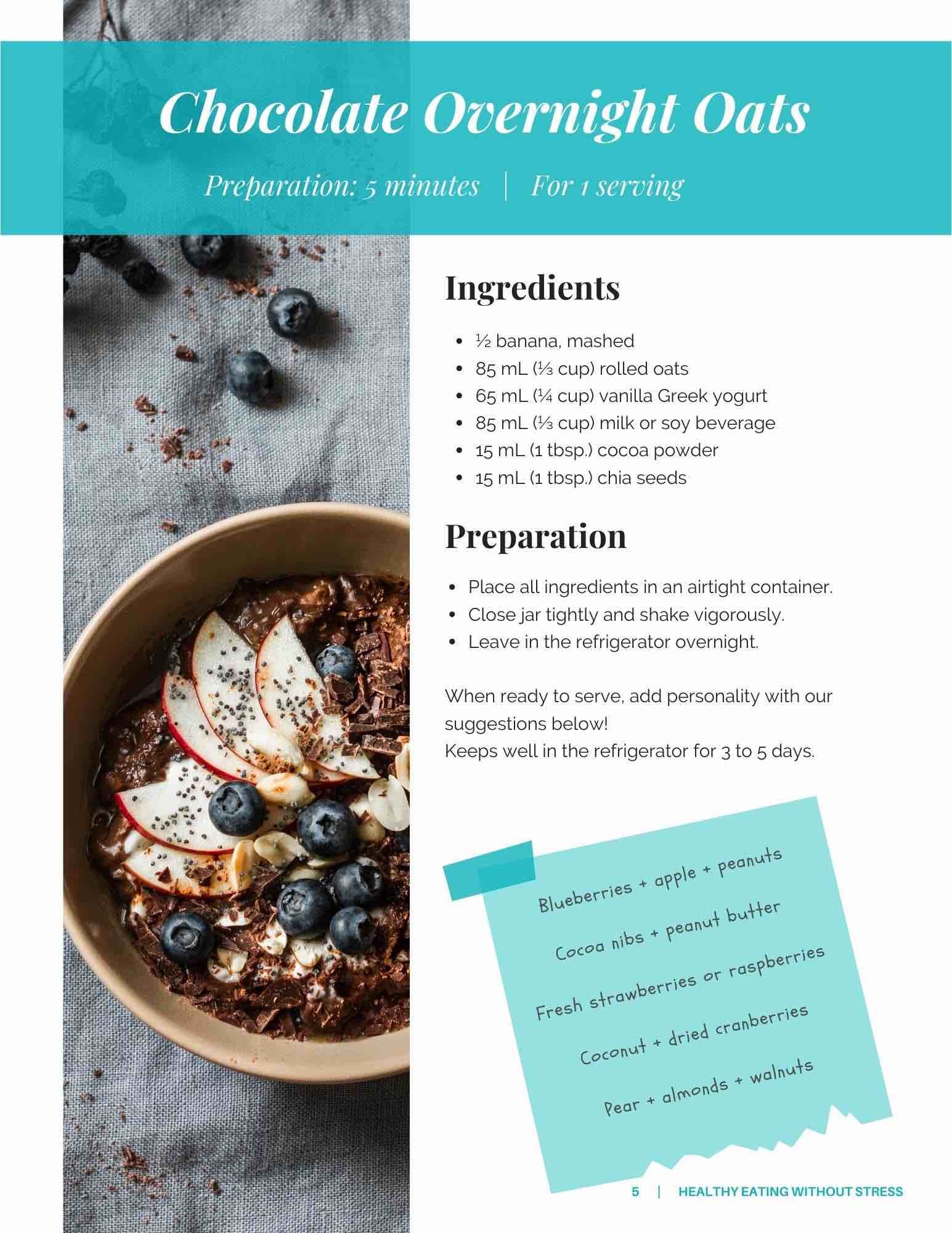
Working from home is changing our eating habits. Without a clear structure, snacking and eating in front of screens easily become part of daily life. The result: less energy, more cravings, and sometimes a confusing relationship with food.
Fortunately, our dietitians have more than one trick up their sleeves to help you regain balance! Here are some simple and effective tips to combine productivity and well-being at home.
1. Create a supportive work and food environment
Our environment strongly influences our eating habits, often without us realizing it. Working near the fridge or pantry can encourage impulsive snacking, often driven by boredom or fatigue rather than real hunger.
To limit these habits:
- Separate your workspace from the kitchen, even symbolically (e.g., a desk area in another room or a defined zone).
- Highlight healthy foods in your visual environment: fresh fruit on the counter, cut veggies in the fridge, nuts or crackers in a container within reach… but avoid keeping them on your desk to prevent distracted eating.
Even good choices should be guided by your real needs: listen to your body’s signals rather than automatic habits.
2. Return to a flexible routine
When working remotely, time cues can easily blur. Setting a flexible meal and snack schedule helps manage your energy better throughout the day.
No need to eat at fixed times or force a meal if you’re not hungry. The idea is to schedule moments to check in with your hunger. This small habit helps avoid eating on autopilot… or forgetting to eat altogether.
Give yourself 20 to 30 minutes to eat in a calm setting, without distractions (phone, computer, TV). This intentional break helps you enjoy your food more, tune in to your fullness signals, and build a more peaceful relationship with food.
3. Plan your meals ahead with meal prep
When working from home, it’s easy to delay meals… or improvise with whatever’s available. The result: less satisfying or less balanced choices. That’s where meal prep becomes a valuable ally.
No need to cook for the whole week at once! Here are some simple ideas to get started:
- Pick 1 to 2 blocks of 30–60 minutes during the week to prep some components in advance: sides, snacks, breakfast, main protein.
- Focus on versatile staples: cook rice or eggs, roast vegetables, chop raw veggies, portion cooked chicken or marinated tofu, make a homemade dip.
- Pre-assemble 2–3 lunches in containers: quinoa salad, meal salad, quick stir-fry, mason jar soup.
Meal planning also means:
- Reducing last-minute decision stress
- Cutting down on ultra-processed food intake
- Saving time—especially on busy workdays
4. Stay hydrated regularly!
Thirst can sometimes be mistaken for hunger, leading to unnecessary snacking. To better listen to your body, always keep a glass or water bottle nearby—a simple habit that supports both your energy and focus.
Want to switch things up?
- Try homemade flavoured waters (lemon, cucumber, mint, berries…)—refreshing, calorie-free, and quick to prepare, they add flavour and colour to your breaks.
- Consider herbal teas or unsweetened teas, hot or cold—they help with hydration while bringing a sense of comfort.
5. Prepare nutritious homemade snacks
Snacks help maintain energy levels and reduce excessive grazing. Being overly hungry can lead to rushed eating or eating past fullness, which may cause discomfort.
Here are some simple, balanced, and delicious snack ideas:
- Chocolate and peanut butter muffins: rich in fibre, vitamins, and iron—they promote lasting satiety while boosting your nutrient intake.
- Blueberry, almond, and dark chocolate cookies: a tasty treat that also nourishes your body.
- Crispy chickpeas: crunchy, high in plant-based protein and fibre—a great alternative to store-bought snacks often higher in fat and salt.
- Quick combos:
- Greek yogurt dip + raw veggies
- Plain Greek yogurt + homemade granola or fresh fruit
- Firm cheese (e.g., cheddar) + grapes
- Canned tuna + whole grain crackers
6. Greet emotional eating urges with compassion
Sometimes we eat without really being hungry: due to stress, fatigue, boredom, or to soothe difficult emotions. It’s human, and not a failure.
If you notice it happens often, take a moment to observe yourself without judgment. Ask yourself: "Am I hungry, or am I trying to comfort myself another way?"
Sometimes, a pause, a walk, a breath, a phone call to a trusted person, or even acknowledging the emotion without fighting it can already help. And if you choose to eat, do so mindfully—without shame.
If these situations weigh on you or happen often, know that support is available: our dietitians can support you with empathy, far from cookie-cutter advice.
7. Eat mindfully, one bite at a time
Taking the time to eat without distractions helps your body digest better and recognize fullness cues more easily. It helps you eat just the right amount—and truly enjoy your meal.
Here’s a simple tip: put down your utensils between bites, chew slowly, and pay attention to the flavours, textures, and temperature of the food. It may seem trivial, but this little ritual turns eating into a real pause.
This is mindful eating: being present, eating with awareness instead of on autopilot.
Curious to learn more? Check out our Beginner’s guide to mindful eating, with practical examples to help you get started.
Need a hand adopting healthier eating habits?
Remote work can sometimes disrupt your eating patterns, but it’s absolutely possible to find balance—and joy in eating—without guilt. By adopting flexible routines and nourishing food choices, you care for your health while supporting your focus, mood, and daily well-being.
You deserve a way of eating that supports you without pressure or restrictions. Our dietitians are here to guide you with practical advice tailored to your work-from-home reality.
Book an appointment with an TeamNutrition dietitian today to reach your goals and start making lasting changes!






